
About this time last year, in July, an attack on a dera in Austria sparked violence in Punjab. Six men have now been 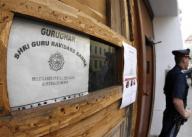 charged- one with murder, and five with attempted murder as accomplices – for the initial attack in Vienna.
charged- one with murder, and five with attempted murder as accomplices – for the initial attack in Vienna.
A 35-year-old man has been charged with murder and two counts of attempted murder, a Vienna court spokesman said. The five others are charged with being accomplices in attempted murder and with attempted severe assault on the worshippers. [link]
The five charged as accomplices are planning on pleading not guilty. [link]
The thirty-five year old charged with murder claims that he suffers from memory loss “after being subdued by worshippers wielding frying pans, a rolling pin and a microphone stand. The defence said it would submit a psychiatric assessment to the court.” He’ll be submitting a psychiatric evaluation to assess any such loss.
Vijay “Jay” Chand Gandhi was sworn in as California’s first South Asian federal judge on April 14th. He is only the second Indian American federal judge in the country. Gandhi will be a magistrate judge for the U.S. District Cou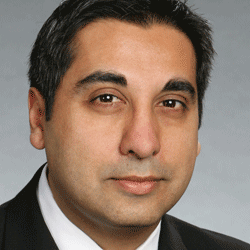 rt in California’s Central District. This district serves Los Angeles, Orange, Riverside, San Bernardino, San Luis Obispo, Santa Barbara and Ventura counties.
rt in California’s Central District. This district serves Los Angeles, Orange, Riverside, San Bernardino, San Luis Obispo, Santa Barbara and Ventura counties.
India-West reports, “The duties of magistrate judges include conducting preliminary proceedings in criminal cases, trying and disposing of misdemeanor cases, ruling on discovery disputes in civil cases, issuing reports in habeas corpus and civil rights cases, trying civil cases and other assigned matters.”
Kiran Jain, president of the South Asian Bar Association in Northern California, told India-West, “As the first South Asian federal judge in California, Judge Gandhi’s appointment is not only an historic advancement in increasing diversity in our judiciary, but a testament to the South Asian American legal community’s progress in advancing our bar to the highest levels of our profession.”
Congratulations Vijay Gandhi! It will be interesting to see if and how Gandhi utilizes his experience as a South Asian American in his work as judge. It is one thing to have a South Asian name and another to actually use your cultural experiences to help the community. I hope he views being a federal judge as an opportunity to shed light on the issues impacting the South Asian community while helping create larger policy changes.
As far as I know, there are no Sikh U.S. federal judges. Do you know of any? If not, I await the day we have Sikh U.S. federal judges. Hopefully it won’t be too much longer. Being a lawyer is one of the top 3 professions many Sikhs pursue any ways.
Guest blogged by Brooklynwala
While many of us were celebrating 311 years of the Khalsa at Sikh Day Parades and Nagar Kirtans this weekend, thousands of immigrants and their allies gathered in Phoenix, Arizona on Sunday to protest what is being called the 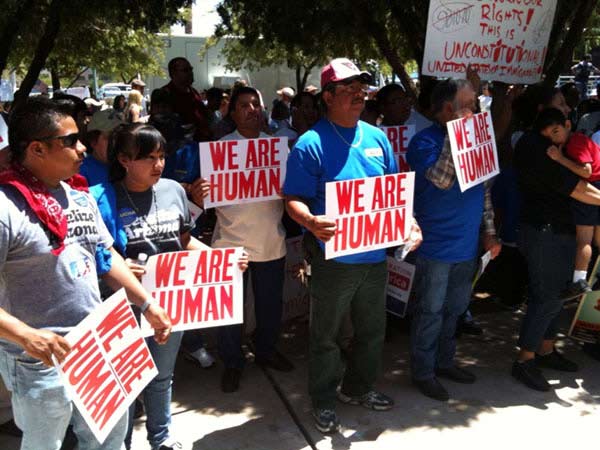 most anti-immigrant legislation in the United States, Senate Bill1070. Signed into law by Arizona Governor Jan Brewer on April 23rd, this measure allows local law enforcement authorities to question individuals based solely upon the suspicion that they may be undocumented.
most anti-immigrant legislation in the United States, Senate Bill1070. Signed into law by Arizona Governor Jan Brewer on April 23rd, this measure allows local law enforcement authorities to question individuals based solely upon the suspicion that they may be undocumented.
According to the New York Times, “The law…would make the failure to carry immigration documents a crime and give the police broad power to detain anyone suspected of being in the country illegally. Opponents have called it an open invitation for harassment and discrimination against Hispanics regardless of their citizenship status.”
President Obama stated that the law threatens “to undermine basic notions of fairness that we cherish as Americans, as well as the trust between police and our communities that is so crucial to keeping us safe.”
As many of us reflect upon the birth of the Khalsa this Vaisakhi, throughout North America (and beyond) our communities come together in celebration. Covered here is a round-up of Vaisakhi celebrations with various media links. If your city is covered here, provide us some context/anecdotes about your experience. If your city is NOT covered here, provide us some context/anecdotes about your experience.
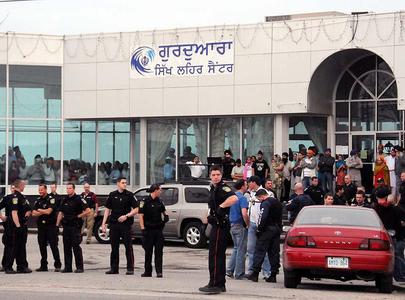 As many Sikhs throughout the world are gearing up to celebrate Vaisakhi, we continuously get disheartening news as well. In Toronto there was a shameful incident this weekend.
As many Sikhs throughout the world are gearing up to celebrate Vaisakhi, we continuously get disheartening news as well. In Toronto there was a shameful incident this weekend.
A former judge, now a prominent Brampton lawyer, is in hospital with serious stab wounds when a mob turned deadly at a Sikh temple on Friday evening.Manjit Mangat, 53, is in hospital with multiple stab wounds to his abdomen, thighs and legs and cuts on his face after he was attacked inside the Sikh Lehar Centre, a temple at Bramsteele Rd. near Steeles Ave. and Hwy. 410.[link]
The worst exhibit I saw ..and I know BOTH sides are guilty of this, was the declaration that the other side are not Sikhs. Both sides need to mature and grow up. I hope the Sikh youth can provide a better example for our elders.[link]
 I read about this story and it just broke my heart. The details are tragic in and of themself, however, the indication that our community somehow failed this family is even more heartbreaking.
I read about this story and it just broke my heart. The details are tragic in and of themself, however, the indication that our community somehow failed this family is even more heartbreaking.
On February 21st, 2010 – Satnam Singh was shot to death by NYC police. A few days later his mother, Balbir Kaur, lay in a hospital bed recovering from being hit with a pan repeatedly by her son who suffered from a mental illness. When the NYC police arrived at the home – Satnam who had suffered an episode of an anxiety attack – was unable to articulate the situation. The police, seeing the mother bleeding on the couch – shot Satnam several times. He later died. Balbir Kaur’s other son, Lakhvinder Singh had in fact called the police. As he lay in a hospital bed preparing for treatment for a medical condition, he worried that he had not heard from his mother in some time. Their father, Bahadur Singh had recently traveled to Punjab and therefore, Balbir was alone at home with Satnam.
Balbir was the sole caretaker of her sons and husband. Satnam was suffering from a mental illness, Lakvinder was in a wheelchair after an accident, and Bahadur had his feet amputated due to gangrene infections. After the incident, Balbir lay in a hospital for days without a friend or family member by her side.
The local Punjabi language newspaper reports that since no one in the community knew the family, their suffering for years, including the latest episode, were unknown to anybody in Sikh circles. I somehow find it impossible to believe that the unfortunate family would never have visited any gurdwara the whole time they were there. Why did anybody not befriend them? Why was a support system not extended to them? Why was a newly migrant woman left to fend and care for her family of 3 disabled men on her own? [link]
On TLH we have addressed various issues effecting the South Asian elderly community. The recent news article in the the New York Times on the difficulties encountered by many Sikh seniors in the California Bay Area was particularly heart wrenching.
In an article in New America Media, Paul Kleyman discusses the impact of depression on ethnic seniors. Many of his statements of seniors feeling alone and depressed resonated with the stories I have heard about Sikh seniors. I have often heard how Sikh seniors feel like America is a “sweet prison”. You have many material benefits, but also a tremendous amount of social isolation. Even when living with their children and grandchildren, the elderly miss their social life back in Punjab. In the US, the elderly spend the majority of their day separated from their children and grandchildren in time and space. Also, generational gaps coupled with cultural differences create social and emotional distance.
Kleyman writes that ethnic seniors are expected to have similar levels of depression as the white elderly population (about one in six people ages 50 and above), but the main difference is:
“… that African-American, Latino, Asian and Native-American seniors are less apt to get treated. That’s because of their higher levels of poverty, lack of insurance or access to treatment and the pervasive stigma of mental illness in many cultures. Left untreated, depression, anxiety disorder and related conditions can result in debilitating physical ailments, as people eat and sleep more poorly and become less physically active. ”
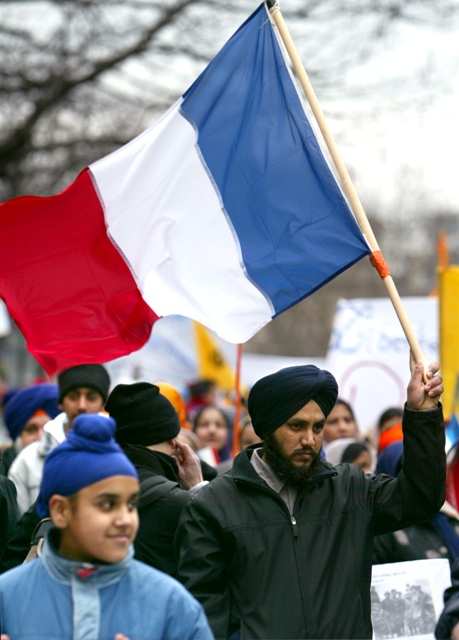 French legislators are currently considering a ban that would prevent Muslim women the right to wear full-body veils in public areas such as buses, trains, hospitals, restaurants, schools and other public places. Since 2004, head scarves and other signs of religious affiliation have been banned from public schools by a government determined to enforce France’s tradition of strict secularism amid fears of growing fundamentalism. Although Sikhs have also been fighting for their right to wear turbans in France – what will an overt ban, which sends a clear statement to its citizens about religious tolerance, mean to other minority groups in the country?
French legislators are currently considering a ban that would prevent Muslim women the right to wear full-body veils in public areas such as buses, trains, hospitals, restaurants, schools and other public places. Since 2004, head scarves and other signs of religious affiliation have been banned from public schools by a government determined to enforce France’s tradition of strict secularism amid fears of growing fundamentalism. Although Sikhs have also been fighting for their right to wear turbans in France – what will an overt ban, which sends a clear statement to its citizens about religious tolerance, mean to other minority groups in the country?
Identifying the burqa as alien to French culture, say the ban’s critics, also fans xenophobic sentiment. What will be declared un-French next? The sari? The Sikh turban? Day-Glo bicycle shorts? [link]
Interestingly – there are only about 2,000 Muslim women in France who wear these veils. Many say that France, a country that prides itself on liberal democracy, is simply taking away the individual freedom to make a choice. As an Op-Ed piece in the NYT asks, “Why the French obsession with the burqa? After all, as the French government itself has conceded, only about 1,900 women wear the full-body covering. So why are over half of the respondents in recent public opinion polls in favor of a ban on it?”
Amarjit Kaur, 39, was critically shot on Wednesday afternoon in Vallejo, California as she sold ice cream out of an ice cream truck near a school. The Bay Area television news reported last night that police believe the reason for the shooting was two fold. First it was a robbery by a 15-year male. Secondly, Kaur’s inability to understand that the English-speaking 15-year old was asking for money caused him to shoot her out of frustration and anger.
As a widowed mother of three and a recent immigrant to the United States, Kaur’s case highlights the struggle that immigrant woman go through to support their families. Her strength to sell ice cream out of a truck while not completely understanding English shows perseverance during adversity but also highlights the risk new immigrants take to build lives for themselves and their families in the United States.
You would imagine that selling ice cream to primarily children would not be high risk. However, Harish Joshi reported that he was held-up twice while operating an ice cream truck in Richmond (California Bay Area).
Kuldeep Malhan, Kaur’s brother-in-law said a fund has been set-up to help support the family at Bank of America, account No. 488019845001. Please donate to help with Kaur’s medical bills and other living expenses while she is unable to work because of her injuries.
Over the past few months, we have come across various articles in the media depicting the state of affairs for students of Indian origin living in Australia. Attacks against Indians (allegedly racially motivated) and, what was perceived to be, a poor response by the police and leaders sparked protests in both Australia and India. Widespread media coverage in India has been especially critical of Australia’s handling of this violence. On the other hand, however, the Indian media’s coverage has been likened to hysteria by many in Australia. Many are saying that the Indian media has done more harm than good in their coverage of the events, and in doing so, have shadowed the real problems faced by students in Australia.
So what exactly is going on? A few days ago we received an email from a TLH reader in Australia who wanted to share his perspective on the situation:
I am a year 12 student from Australia about to go into university and I would just like to express some opnions which I hope you could take to the readers of The Langer Hall. Recently there has been much uproar in the Indian media and community about these so-called racist attacks on Indian students in Australia. It really pained me to hear how such events could occur in what has developed to be one of the most multicultural countries in the world. Having just finished school I can say that the range of cultures and backgrounds which I have been exposed to…has been awesome. In my fifteen years as a turbaned boy I have not once felt like this country holds any form of racist ideas against me. My father has been a turbaned bus driver, and now a train driver for many years and he expresses similar ideas to me… Just recently the news begins to appear through investigations by Australian Police that many of these attacks on Indian students..were in fact carried out by other Indian students. I am not saying that all the attacks that occur…are by Indians…but i am raising the point that Australia is not as bad as many people make it seem. I see in Indian newspapers everyday that there was some attack on an Indian and they request Indians to stop going to Australia. Yet not one paper made mention of the fact that it was Indian students who had been arrested for the murders. Well I suppose that is expected in India… [-KS]
Drug abuse is an epidemic that is hitting Punjab at high rates. We hear about Punjabi men being addicted to drugs and the ramifications of their addiction on them and their families.
Prerna Suri of Al Jazeera reports on the devastating effects of drugs in Amritsar. The city’s location near Pakistan and Afghanistan has made it a primary target for drug trade and abuse. According to the report, seventy percent of youth (15-35 years) in Amritsar are addicted to heroin.
Suri highlights how the drug trade happens, its effects on those who abuse narcotics, and the ramifications of drug abuse for the addicits’ families.

I am a strong believer that Sikhi can play a strong role in both the prevention and recovery from drug abuse. Rather than allow drugs to take over our spiritual capital, we can use our spiritual strength to help heal those who are suffering from drug abuse and prevent others from entering this kind of addiction. You can read about one Sikh’s experience of visiting Akal Charitable De-addiction Centre , a drug recovery program in Sangrur, Punjab.
Where do the elderly fit into India new modern image? Often in South Asian families, caring for the elderly is not a question-it will happen. In West we know of the many stories of how the elderly are mentally, physically, and 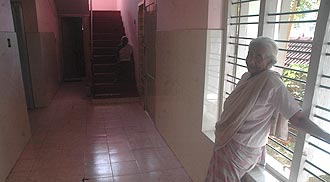 emotionally abused by their children. Often the elderly are forced into starting their life over again in a new country coupled with the strain of supporting themselves at an age when they can no longer work and are socially dependent on their children.
emotionally abused by their children. Often the elderly are forced into starting their life over again in a new country coupled with the strain of supporting themselves at an age when they can no longer work and are socially dependent on their children.
However, in India, we are told it’s not the case. Families care for their elderly-some are even forced to because all the property is in their elderly parents names. But New America Media reports that the number of elderly left to care for themselves in India is skyrocketing and the country has no infastructure to care for them. For example, with an aging population of 80 million, Indian old age homes do not accept patients with dementia. Dementia is a common problem that afflicts the elderly.
A few weeks back, while skimming through the news, I found an interesting report on Canadian Prime Minister 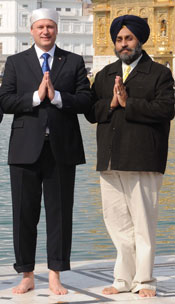 Stephen Harper’s recent visit to the Darbar Sahib in Amritsar. Although I didn’t care much for the hoopla around his visit, I did find it interesting that he “offended” Sikhs by refusing to accept parshad or langar.
Stephen Harper’s recent visit to the Darbar Sahib in Amritsar. Although I didn’t care much for the hoopla around his visit, I did find it interesting that he “offended” Sikhs by refusing to accept parshad or langar.
As I understand it, the preparation of parshad (grace) is unique in that it is ceremonially touched by a kirpan (kirpan bhet), which serves as an indication of the Guru’s acceptance and blessing. It is then distributed to 5 Amritdhari Sikhs representing the Guru Khalsa Panth. A Sikhs’ consumption of parshad displays a submission to the Guru. So accepting parshad is essentially “accepting His grace.” I’ve also been taught that parshad should be distributed after the hukamnama is read, as accepting parshad symbolizes acceptance of the hukamnama.
Now, whether or not Sikhs themselves understand the hukamnama, or even listen to it is another post for another day – but, if accepting parshad is accepting the Guru’s hukam, should a non-believer accept it? Although the Rehat Maryada states that parshad should be offered to everyone equally (as it should), should we be offended if someone rejects it? If a non-Sikh understands the meaning behind our practice and politely refuses it out of respect, shouldn’t we appreciate it instead?
I remember years ago at a Sikh Day Parade in Washington DC, as a handful of us were walking through the sidewalks handing out “Who are the Sikhs” pamphlets and answering questions from onlookers, an elderly BibiJi was darting through the crowd distributing parshad to random strangers. As shocked as I was to see this, it couldn’t compare to the shock on the face of those who received it. Most were not sure what to do with it, or joked about it with their friends, while others were seen throwing it away. I’m sure the BibiJi’s heart was in the right place, but what were we hoping to accomplish by this?
My question is…how can we value our traditions if we don’t even understand them?
And if we don’t value our traditions, how can we expect others to?
(more…)
Many politicians in America and Canada appeal to their Sikh constituents by visiting local Gurdwaras. Sometimes these visits include a brief speech and other times just a saroopa. Regardless, it’s usually an ask for votes.
What I particularly find powerful about Canadian politicians is that they will walk along side their Sikh constituency during Nagar Kirtans and visit the Harmandir Sahib. To me that is representative of the political power the Sikh community has in Canada. Politicians are not only appearing to give a “vote for me” speech or state a “thank you” for the saropoa. They need to do more to get the Sikh vote.
Sam Grewal of the Toronto Star writes:
“The Liberal party took us for granted and is now paying the price,” Gill says. “It would be a mistake for the Conservatives to think that simply appearing at functions is enough to win votes.”
An appearance by the Prime Minister, at the place most revered by Sikhs, may be the exception.
Kash Gill, who grew up as a farm worker, will be sworn in today as Yuba City’s first Punjabi-American mayor. As many of you know, Yuba City (often referred to as the pindh of California), has a large Punjabi Sikh population. Just last weekend, 75,000 people gathered in Yuba City for the annual Nagar Kirtan. It is perhaps not surprising, therefore, that finally a Punjabi-American will be taking the seat of mayor. The event does, however, signify a signficiant step for a community that makes up about 12 percent of the population in Yuba City. The story also embodies the dream, which many immigrant communities carry with them – that by working hard and perservering, anything is possible.
“You’d never think you’d be picking peaches one day and the next day you’re the mayor of Yuba City,” he said. “That’s why we call it the land of opportunity.” After moving to the United States when he was 3 years old, Gill’s parents stressed that education was the path to leaving the life of farm laboring. [link]
Gill said his priority will be to improve flood protection for the community, reduce gang activity and offer opportunities for young residents. It should be added, that in Yuba City the mayor is chosen on a rotation system and while many of the comments (in the linked article) do discuss his Punjabi-American background, many more are focused on discussing his priorities and how they will benefit the people of Yuba City – as they should be.
Note: The Appeal-Democrat is hosting a live streaming video tonight of City Councilman Kash Gill being sworn in as mayor of Yuba City at www.appealdemocrat.com.
25 years ago history was made for several different reasons. Today, as we reflect on the invasion, on the assassination, and on the massacres, we come across multiple news articles which provide information and commentary on the events of that year. I wanted to take the time to document and highlight these articles as they’re worthy reads in providing information to readers around the world. I encourage you to read these pieces – they are vital to our understanding and they will inform Sikhs and non-Sikhs alike about events in our history.
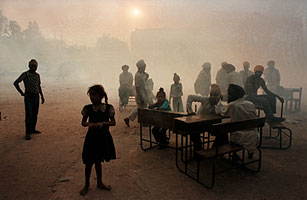 1. TIME magazine featured an article titled, “India’s 1984 Anti-Sikh Riots: Waiting for Justice.” Our readers have previously argued against the use of the word “riot” and suggested that “genocide” is the more fitting description of what happened. Regardless, this is an important article which discusses the often silent victims of 1984 – the widows and their children and the impact the events (and lack of justice) has had on their future.
1. TIME magazine featured an article titled, “India’s 1984 Anti-Sikh Riots: Waiting for Justice.” Our readers have previously argued against the use of the word “riot” and suggested that “genocide” is the more fitting description of what happened. Regardless, this is an important article which discusses the often silent victims of 1984 – the widows and their children and the impact the events (and lack of justice) has had on their future.
The widows’ colony in Tilak Vihar is a cheaply built and neglected cluster of homes, which were given by the government to hundreds of women and their children who survived what have become known as the anti-Sikh riots of 1984. But as the grim event’s 25th anniversary nears at the end of this month, crime, addiction and prostitution have taken root in what was supposed to be a survivors’ safe haven. Residents say this is because of the damage to the mental health of children who were witness to their parents’ and siblings’ murders and who grew up in impoverished homes and weren’t given any medical help — physical or mental — for their problems. [link]
Of note: for the 25th anniversary of the event, advertisements by Ensaaf — showing an old woman wiping away her tears, with the words, “25 years ago, our loved ones were burned alive in front of our eyes,” and in the next line, “Why has India, the world’s largest democracy, denied us justice?” — are scheduled for the month of November in the San Francisco Bay Area’s transit system!
Domestic violence organizations often use helplines to reach a larger population, while providing an anonymous format to offer help. The Punjab Government implemented a community health helpline 20 days ago to assist in locating ultrasound and abortion centers in a similar endeavour to protect women’s human rights.
The Chandigarh Tribune reports that this helpline (number# 4005252) is part of a pilot project coordinated by the National Rural Health Mission and has already reported a successful intervention. An ultrasound/abortion center in Sirsa, Haryana is being investigated after an anonymous caller reported that a young woman of Mansa village had recently aborted a girl child. Through immediate action, officials found that name/location of the ultrasound and abortion center. Also, they found out that the young woman had been forced to have an abortion by her mother-in-law. Now both the center and mother-in-law are under police investigation. The young woman is not being investigated since she was forced into the abortion by her mother-in-law after already having a 7 month old daughter.
Anurag Aggarwal, mission director, National Rural Health Mission says,
“The hotline gives an opportunity to women to speak up in case they are being forced to get their female fetus aborted. If she is not able to say anything, her relatives or friends can inform us. The caller’s identity is not asked and the whole thing is anonymous.”
The helpline at 4005252 runs from 9am-6pm and gives residents an opportunity to air their grievances and make their suggestions on health services in the state. Through successful implementation, the helpline is a good tool for practical action on the female foeticide issue. I wonder if we could create a similar helpline in various Diaspora communities because the rates of female foeticide are also high outside of South Asia. What do you think?

Toronto Star reporter Raveena Aulakh, posing as an expectant mother, is handed bags of pills in an industrial area in Mississauga by Kanwar Bains, news editor of a Punjabi-language newspaper.
Just in case the rest of the world didn’t know what a sorry state Punjab was in with respect to its gender imbalance, there has been two headline reports from Canada’s biggest newspapers in recent weeks. The first deals with the problem in India and the second talks about how the problem has been exported to Canada.
The first from the Globe and Mail entitled “Land of the Rising Son”, examines how India has responded to the decline of female births. There’s two sad learnings from the article. One is that Punjab is still in the worst position with respect to male-female gender ration and the second is that an individual’s level education has does little to reverse generations of discrimination.
All help is needed to locate Karamjit Kaur,16, a Punjabi Sikh teenage girl from Reno, Nevada who went missing on Wednesday evening while r iding her bike. She had arrived from India eight-months ago and recently started learning how to ride her bike. On a hot Wednesday evening around 6:30pm Karamjit went outside in her black top and blue cotton pajamas to ride her bike and never came back home. The Reno police suspect foul play. Karamjit’s bike was found a quarter of mile away from her house by a skateboarding park.
iding her bike. She had arrived from India eight-months ago and recently started learning how to ride her bike. On a hot Wednesday evening around 6:30pm Karamjit went outside in her black top and blue cotton pajamas to ride her bike and never came back home. The Reno police suspect foul play. Karamjit’s bike was found a quarter of mile away from her house by a skateboarding park.
Karamjit is approximately 5’7” tall, 140 pounds, with long black hair and brown eyes. She has a scar on her forehead, and her left canine tooth is longer. She was last seen wearing a black v-neck short-sleeve t-shirt, bright blue cotton pajama bottoms and black flip-flops. Her family is devastated and praying that she returns home soon.
The Reno Police Department is asking for the public’s assistance in locating her. Anyone with information relating to this incident should contact the Reno Police Department at 775-334-2115, Secret Witness at 775-322-4900, or www.secretwitness.com. All calls to Secret Witness remain anonymous, and Secret Witness pays rewards for information on all crimes.
Gurmeal Singh, the British Sikh police officer who was humiliated for practicing Sikhi, will be compensated for “indirect harassment” and humiliation. Judge Murray Creevy ruled that the Greater Manchester Police (GMP) viola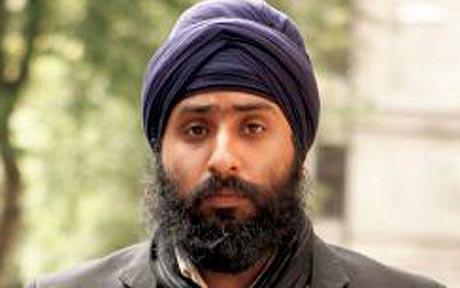 ted his dignity.
ted his dignity.
The BBC reports that the Assistant Chief Officer at GMP, Julia Rogers felt that they had always acted in the best interest of Singh. However, GMP accepts the ruling and has already updated their policies.
After a heated conversation with his Sergeant about his inability to remove his turban while on the job, Singh feared that he would be made to look like a comic character on television by wearing a modified turban.
Ultimately the ruling according to Singh’s lawyer:
“… leaves him in difficulty in relation to his future career but will hopefully open the eyes of Greater Manchester Police. He joined the police because of his values as a Sikh. What is important now is what Greater Manchester Police will do to help him come back.”
